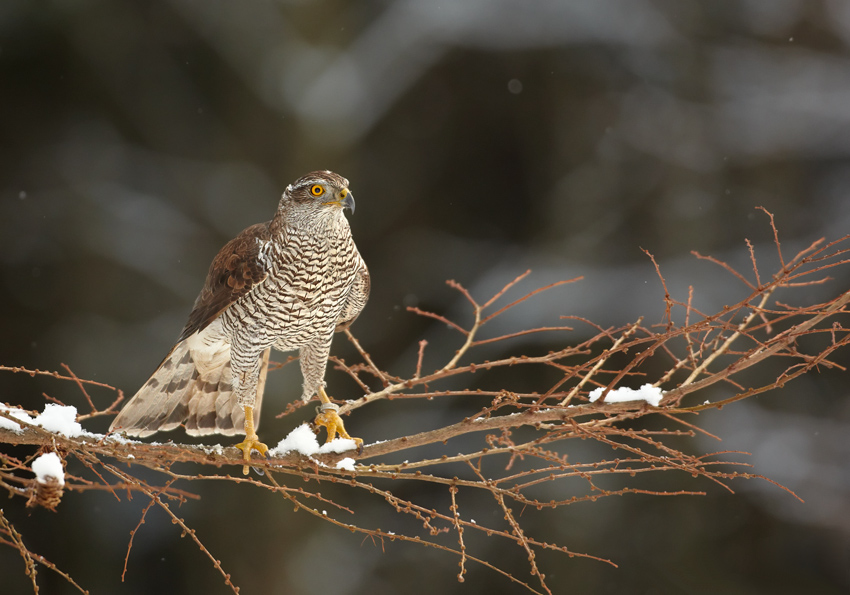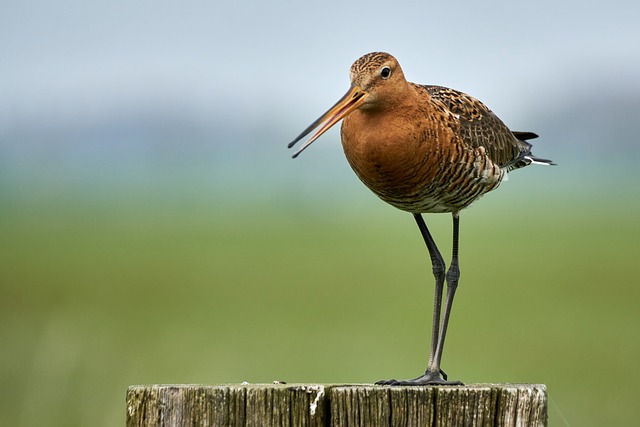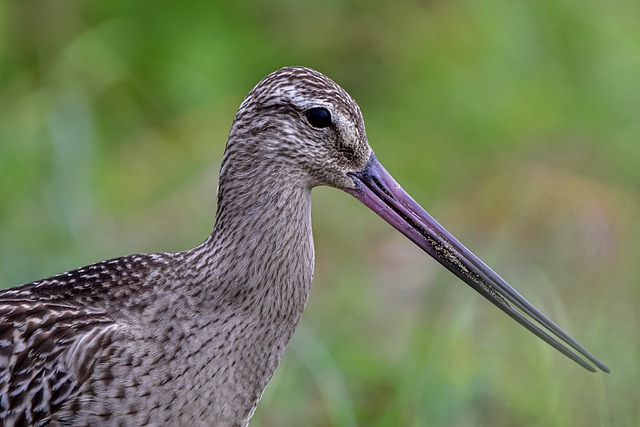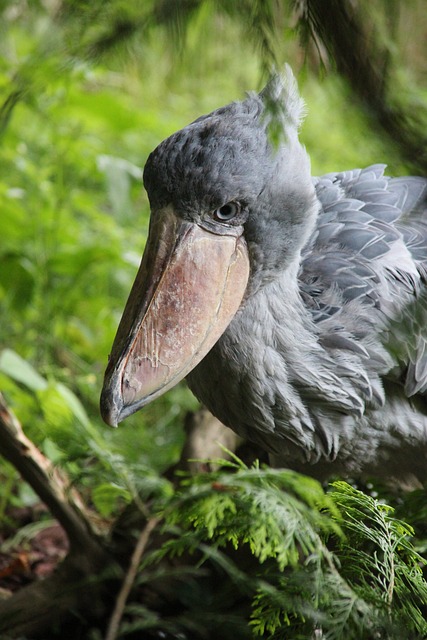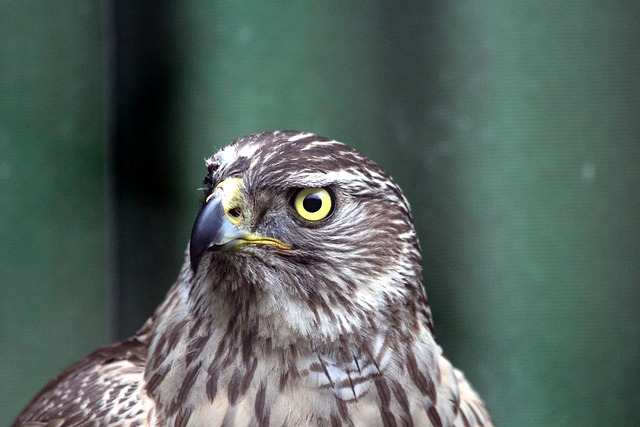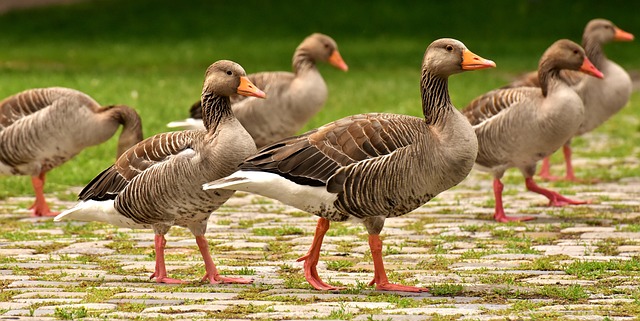Mute swans are one of the most majestic birds in the world, with a stately grace that has captivated humans for centuries. These graceful birds are a symbol of beauty, joy, and peace, and have been featured in many stories, poems, and works of art.
But what are mute swans? How can we appreciate the majesty of these birds? This article will answer those questions and explore the beauty and mystery of mute swans.
Introduction
Mute swans, or Cygnus olor, are a species of swan native to Europe and Asia, though they are now found throughout the world. They get their name from the lack of sound they make, unlike other swan species which are known for their loud and melodic calls. Mute swans are the largest waterfowl in the world, with males reaching weights of up to 25 pounds. They have long necks and stout bodies that are mostly white, with black beaks and feet. Their wings are mostly white, with black tips and markings near the wingtips.
The most distinguishing feature of mute swans is their remarkable grace and presence. They have a slow and steady way of swimming, often gliding with their wings held out and their heads and necks curved gracefully. When in flight, they can reach impressive heights, with some recorded instances of swans flying as high as 6,000 feet. They also have an impressive wingspan, with some mute swans having wingspans of up to 8 feet.
Mute swans are highly social, living in pairs or small flocks. They are highly territorial and will defend their territories against other birds and animals. They are also long-living birds, with some living as long as 30 years in the wild. They are monogamous, and will stay with the same mate for life.
Though they are not known for being vocal, mute swans do communicate with each other in a variety of ways. They use a wide range of sounds, from hissing to clicking, to communicate with each other. They can also communicate with their wings, flapping them in warning or greeting. Finally, mute swans also use body language to communicate, often holding their heads and necks upright when alarmed or excited.
In this article, we will explore the majesty of mute swans, from their physical characteristics and behaviors, to their habitats and current conservation efforts. We will also cover some of the myths and unique facts surrounding these birds, as well as their cultural and historical significance. Finally, we will look at what we can do to help protect mute swans and their habitats.
Physical Characteristics
Mute swans are a breed of swan known for their majestic beauty and grace. They are the largest of all water birds, with a body length of up to 5 feet and a weight of up to 20 pounds. Mute swans have an elongated neck, and their long wingspan can reach up to 8 feet.
One of the primary distinguishing features of mute swans is their bright white plumage. The feathers of the mute swan are thick and smooth, and their bill is orange with a black base. The black knob on the bill is an indicator of its age. Juveniles have a plain yellow bill, while adults have a black knob at the base of the bill.
Mute swans are also known for their red legs, which are used to propel them through the water. The webbed feet help mute swans maneuver gracefully in the water. Mute swans are capable of swimming at speeds of up to 10 miles per hour and have been known to fly at speeds of up to 40 miles per hour.
Mute swans can live up to 20 years, though most live between 10 and 15 years. They are highly territorial and usually mate for life, usually returning to the same location each year. The female will lay four to six eggs in a nest near the shore, which will hatch after around 35 days. The cygnets are covered in grey down and will take up to four years to reach maturity.
Mute swans are a majestic sight that can be seen in many parts of the world. With their beautiful white feathers and regal grace, they are a sight to behold.
Diet & Habits
The diet of mute swans consists mainly of aquatic vegetation, such as pondweed, wild celery, sedges, and water lilies. In addition, they also feed on a variety of insects and mollusks, as well as small fish. Mute swans are particularly fond of eating a type of aquatic plant known as wild millet.
Mute swans are usually solitary animals that can be seen swimming in small groups or pairs. During the breeding season, they form strong pair bonds and live together for most of the year. They are territorial and will defend their patch of water quite fiercely.
Although mute swans can be seen swimming for much of the day, they tend to rest at night. During the breeding season, they can be observed performing their courtship ritual. This involves the male extending his neck and lowering his head in front of the female, while the female circles him and eventually accepts him as a mate.
Mute swans usually lay between three and six eggs, and the eggs take about 35 days to hatch. The male and female take turns incubating the eggs, while the other goes off to feed. Mute swans usually breed between the months of April and August.
The young swans, known as cygnets, remain with their parents for up to a year before they can leave the nest. During this time, the cygnets are reliant on their parents for food and protection. After a year, the cygnets reach sexual maturity and can leave the nest to find a mate and breed.
The mute swan is an impressive bird and has inspired much cultural symbolism over the years. It’s beauty has been celebrated throughout history for its elegance, and its grace and power has been a source of inspiration for many.
Distribution & Habitat
Mute swans are widely distributed across much of the Northern Hemisphere, with their migratory range stretching from the Arctic to the tropical regions of the world. The species is mainly found in open habitats such as lakes, ponds, marshes, reservoirs, wetlands, lagoons, and bays. They can also be found in agricultural areas, including meadows, fields, and pasture land.
In Europe, mute swans are found in almost all countries, and have been observed to migrate as far south as the Mediterranean Sea. In North America, they are found mainly along the east coast of the United States and Canada, but have also been observed in areas of the Midwest, such as Wisconsin and Minnesota, and in the Pacific Northwest. In winter, they can be found in areas south of their breeding range.
Mute swans favor shallow waters with plenty of aquatic vegetation, as this is where they feed and build their nest on the banks. They may also inhabit brackish waters, such as estuaries, where they feed on aquatic vegetation and occasionally on small invertebrates. Mute swans will also take advantage of artificial habitats, such as fish ponds and reservoirs, and are even known to inhabit urban parks and gardens.
Mute swans are monogamous and usually form long-term pair bonds, which will often be repeated in subsequent breeding seasons. They typically breed in the same area and may use the same nest or build a new one each year. During the non-breeding season, they can be found in flocks of up to hundreds of birds, but they stay in pairs while breeding.
Mute swans exhibit a wide variety of migration patterns, depending on the region in which they live. In Northern Europe, they are mainly sedentary, with some individuals migrating south in winter. In North America, they are usually migratory, with birds from the northern states and Canada migrating south to spend the winter in areas such as the Mid-Atlantic and Gulf Coasts.
The preservation and conservation of mute swans is of major importance given their importance to the local ecosystems. In areas where they are found, their presence helps to maintain the quality of the waterways and wetlands by consuming aquatic vegetation and controlling aquatic invertebrate populations. It is essential that humans take steps to protect this majestic species and their habitat in order to ensure their continued survival.
Preservation & Conservation
The preservation and conservation of mute swans is a crucial issue that has received much attention in recent years. The conservation status of mute swans in their native range is generally considered to be “secure”, although this does not necessarily mean that their populations are actually increasing.
The biggest threat to mute swans is the destruction of their habitats due to human activities, such as urbanization and pollution. To help protect mute swans, conservation efforts focus on the protection of their habitats and the management of their populations to ensure that they remain healthy and balanced.
One of the primary goals of conservation efforts is to ensure that the mute swan population remains healthy and stable and that the species remains secure in its native range. Conservationists work to promote responsible land use practices that will not damage or disturb the habitats of mute swans and to identify and protect areas of critical habitat. Management plans are also in place to ensure that mute swans can exist in harmony with other species.
To prevent the spread of disease, conservationists want to reduce the interaction between mute swans and other species, particularly waterfowl. This is an important goal of conservation efforts, as mute swans have been known to transmit diseases to other waterfowl. Additionally, measures are in place to ensure that mute swans are not over-harvested for recreational hunting and that their populations are not disturbed by human activities.
The conservation of mute swans is also dependent on the protection of their habitats. As mute swans are waterbirds, they rely on wetland habitats for their survival. Conservationists are working to ensure that wetland areas remain undisturbed and healthy and that the necessary resources are available for mute swans to thrive. This includes the restoration of wetlands, the identification and protection of important wetland areas, and the management of nutrient pollution.
Interesting Facts
Mute swans are a majestic species of waterfowl that have long been admired for their beauty and grace. Although they may look like they're only capable of gliding serenely across the surface of the water, there is much more to them than meets the eye. They have a deep and fascinating cultural history, myths and legends surrounding them, and unique physical characteristics that set them apart from other species of swans. Here are some interesting facts that you may not have known about the majestic mute swan.
Mute swans are the largest species of wild waterfowl in the world. An adult mute swan can reach up to five feet in length, and can weigh up to 30 pounds. This makes them twice the size of other species of swans like the trumpeter and tundra swans. They also have a very distinct bill pattern, which is black with a bright orange knob at the base. This makes them easily distinguishable from other swans.
Mute swans are omnivores, meaning that they feed on both plants and animals. Their diet consists of aquatic vegetation, algae, small invertebrates, fish, crustaceans, mollusks, and even sometimes grain. They will also consume dead or weakened fish, amphibians, reptiles, and small mammals.
Mute swans are very territorial and prefer to live in pairs. When they find a suitable mate, they will often establish a territory together and remain together for life. During the breeding season, they can become very aggressive and will fiercely protect their nesting area from any intruders.
Unlike other species of swans, the mute swans are powerful fliers. They can fly up to speeds of 40 miles per hour, and have been known to travel up to 200 miles in a single day.
Mute swans also have an interesting cultural significance. In ancient Egypt, they were viewed as symbols of love and purity, while in the Middle Ages, they were considered the embodiment of chastity and fidelity. They have also been featured prominently in literature and art, often serving as symbols of beauty and grace.
In some parts of Europe, mute swans are still a protected species. In addition, some conservation organizations are working to increase the population of mute swans in various areas. This includes efforts to create and protect wetland habitats, as well as providing food and nesting materials for the swans.
Mute swans can live for up to 20 years in the wild. In captivity, they can live even longer. They are a species that has been around for thousands of years, and it is important that we continue to protect them and ensure that their populations remain healthy and vibrant.
These are just a few of the many interesting facts about the majestic mute swans. From their unique physical characteristics to their fascinating cultural history, they are truly remarkable creatures that are a joy to observe. With proper conservation and protection, we can help ensure that their populations remain healthy and that their beauty will be admired for generations to come.
Conclusion
The majesty of mute swans can be seen in their physical features, diet and habits, distribution and habitat, and their conservation efforts. Through studying the lives of mute swans, we have come to understand the importance of protecting these majestic birds.
Mute swans are easily distinguished by their white feathers and orange beaks, and they are often found in large bodies of water. They consume aquatic vegetation and small animals, and have a variety of social behaviors including mating and nesting. Mute swans are found in temperate regions across the globe, usually in shallow waters near wetlands.
Though they are often taken for granted, mute swans are important to many cultures and are a part of long-standing myths and legends. They also play an important role in various ecosystems, making them worth preserving. Unfortunately, their habitats are often threatened by human development, leading to a decrease in their populations.
Thankfully, conservation efforts are being taken to protect mute swans. Organizations like the Mute Swan Society and the Royal Society for the Protection of Birds are dedicated to preserving the population of mute swans and their habitats. There are also steps that individuals can take to help protect these birds such as reporting any suspicious activities, participating in local clean-up efforts, and supporting organizations that are dedicated to their preservation.

